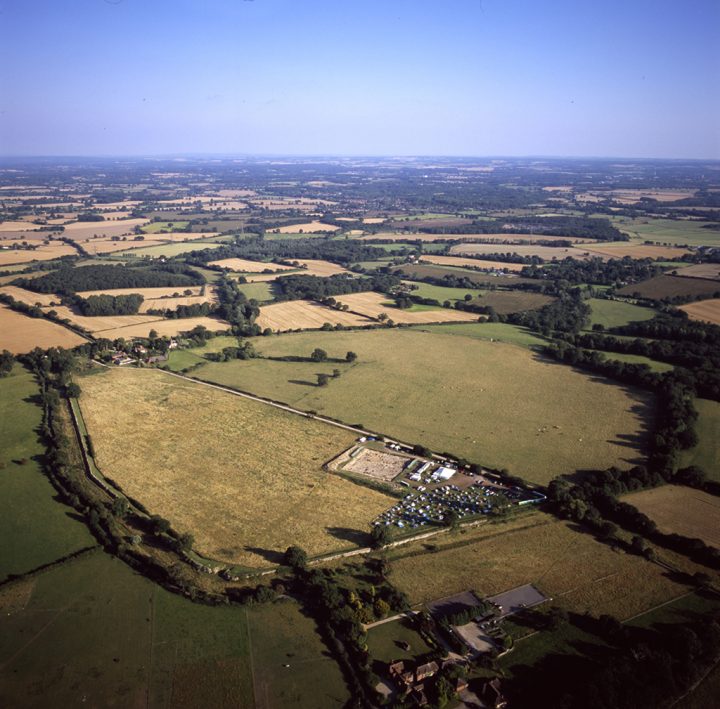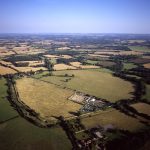Publications
Each year we publish a number of interim reports on our current research and excavations. For our most recent interim reports from The Silchester Environs and Nero at Silchester projects, as well as an archive of Insula IX publications, please visit our Interim Reports page
Silchester Town Life Project Publications (since 1997)
Books
Allen, J. R. L. 2014. Whetstones from Roman Silchester (Calleva Atrebatum), North Hampshire. Character, manufacture, provenance and use. ‘Putting an edge on it.’ BAR British Series 597, Oxford: Archaeopress
Fulford, M. (ed.) 2012. Silchester and the Study of Romano-British Urbanism. JRA Supplementary Series No. 90. Portsmouth, Rhode Island: Journal of Roman Archaeology.
Fulford, M., Clarke, A., Durham, E and Pankhurst, N. in press (2018). Late Iron Age Calleva. The Pre-Conquest Occupation at Silchester Insula IX. Britannia Monograph 32. London: Society for the Promotion of Roman Studies
Fulford, M.G., Clarke, A. and Eckardt, H. 2006. Life and Labour in Late Roman Silchester.Excavations in Insula IX since 1997. Britannia Monograph 22. London: Society for the Promotion of Roman Studies.
Fulford, M. and Clarke, A. 2011. Silchester: City in Transition. The Mid-Roman Occupation of Insula IX c. A.D. 125-250/300. A Report on Excavations Undertaken Since 1997. Britannia Monograph 25. London: Society for the Promotion of Roman Studies.
Journal Articles and Book Chapters
Allen, J.R.L. 2012. A Rhenish Pompeiian-style mill from Early Roman Silchester (Calleva Atrebatum). Britannia 43, 260-268. doi: 10.1017/S0068113X12000268
Allen, J.R.L. and Fulford, M.G. 2004. Early Roman mosaic materials in southern Britain, with particular reference to Silchester (Calleva Atrebatum): a regional geological perspective. Britannia35: 9-38. doi: 10.2307/4128620
Allen, J. R. L., Fulford, M. G. and Todd, J. A. 2007. Burnt Kimmeridgian shale at early Roman Silchester, south-east England, and the Roman Poole-Purbeck complex-agglomerated geomaterials industry. Oxford Journal of Archaeology 26(2), 167-191
Banerjea, R.Y., Fulford, M., Bell, M., Clarke, A. and Matthews, W. 2015. Using experimental archaeology and micromorphology to reconstruct timber-framed buildings from Roman Silchester: a new approach. Antiquity 89(347): 1174-1188. doi: 10.15184/aqy.2015.108
Bird, J. 2015. Two Rare Late Samian vessels from Southern England. Britannia 46, 37-54
Clarke, A. and Fulford, M. 2002. The Excavation of Insula IX, Silchester: the first five years of the ‘Town Life’ project, 1997-2001.Britannia 33: 129-166. doi: 10.2307/1558855
Clarke, A., Fulford, M. and Rains, R. 2003. Nothing to hide – online database publication and the Silchester Town Life Project, in Doerr, M. and Sarris A. (eds), CAA 2002. The Digital Heritage of Archaeology; Computer Applications and Quantitative Methods in Archaeology, Proceedings of the 30th Conference, Heraklion, Crete, April 2002. Greece: Hellenic Ministry of Culture, pp. 401-404.
Clarke, A., Fulford, M.G., Rains, M. and Tootell, K. 2007. Silchester Roman Town Insula IX: the development of an urban property c. AD 40-50 – c. AD 250. Internet Archaeologyhttp://intarch.ac.uk/journal/issue21/4/index.html
Cook, S., Banerjea, R.Y., Marshall, L.J., Fulford, M., Clarke, A. and van Zwieten, C. 2010. Concentrations of copper, zinc and lead as indicators of hearth usage at the Roman town of Calleva Atrebatum (Silchester, Hampshire, UK). Journal of Archaeological Science 37(4): 871-879. doi: 10.1016/j.jas.2009.11.017
Cook, S.R., Clarke, A. and Fulford, M.G. 2005. Soil geochemistry and detection of early Roman precious metal and copper alloy working in the Roman town of Calleva Atrebatum (Silchester, Hampshire, UK). Journal of Archaeological Science 32(5): 805-812. doi: 10.1016/j.jas.2005.01.006
Cook, S.R., Clarke, A.S., Fulford, M.G. and Voss, J. 2014. Characterising the use of urban space: a geochemical case study from Calleva Atrebatum (Silchester, Hampshire, UK) Insula IX during the late first/early second century AD. Journal of Archaeological Science 50: 108-116. doi: 10.1016/j.jas.2014.07.003
Cook, S. R., Fulford, M., Clarke, A. and Pearson, C. 2003. Soil geochemical analyses as an indication of metalworking at the excavation of a house in the Roman city at Silchester (UK). Journal de Physique IV.107(1), 319-321
Crummy, N. 2011. A Campanian vessel foot from Silchester. Britannia 42: 157-165.
doi: 10.1017/S0068113X11000018
Crummy, N. 2016. Recycling and repairing metalwork at Roman Silchester. Hampshire Studies71(1): 70-75.
Fisher, C.R., Terras, M. and Warwick, C. 2009. Integrating new technologies into established systems: A case study from Roman Silchester, in Frischer, B., Crawford, J.W. and Koller, D. (eds) Making History Interactive: Computer Applications and Quantitative Methods in Archaeology (CAA). Proceedings of the 37th International Conference, Williamsburg, Virginia, United States of America, March 22-26, 2009. Oxford: British Archaeological Reports, pp. 11-18.
Fulford, M.G. 2008. Nero and Britain: the palace of the client-king at Calleva and imperial policy towards the province after Boudicca. Britannia 39: 1-14. doi: 10.3815/006811308785917105
Fulford, M. 2011. Silchester: the renaissance of an Iron Age and Roman town, in Whimster, R. (ed.) The new antiquarians: 50 years of archaeological research in Wessex, CBA Research Rept 166, York, pp. 94-106
Fulford, M. 2015. Silchester: the Town Life Project 1997-2014: reflections on a long term research excavation, in Brindle, T., Allen, M., Durham, E. and Smith, A. (eds) TRAC 2014: Proceedings of the Twenty-Fourth Annual Theoretical Archaeology Conference, Reading 2014. Oxford: Oxbow, pp. 114-121.
Fulford, M., Clarke, A., Eckardt, H. and Shaffrey, R. 2002. Victorian excavation methodology: The Society of Antiquaries at Silchester in 1893. Antiquaries Journal 82: 285-306. doi: 10.1017/S0003581500073819
Fulford, M., Handley, M. and Clarke, A. 2000. An early date for Ogham: The Silchester Ogham Stone rehabilitated. Medieval Archaeology 44: 1-23 doi: 10.1179/med.2000.44.1.1
Fulford, M., O’Riordan, E.J., Clarke, A. and Rains, M. 2010. Silchester Roman Town: developing virtual research practice 1997-2008, in Bodard, G. and Mahony, S. (eds) Digital Research in the Study of Classical Antiquity. Farnham: Ashgate, pp. 15-34.
Lodwick, L. 2016. Agricultural innovations at a Late Iron Age oppidum: archaeobotanical evidence for flax, food and fodder from Calleva Atrebatum, UK. Quaternary International doi: 10.1016/j.quaint.2016.02.058
Marshall, L.-J., Cook, S.R., Almond, M.J. and Fulford, M.G. 2008. Roman diet and trade: evidence from organic residues on pottery sherds recovered at the Roman town of Calleva Atrebatum (Silchester Hants.). Britannia 39: 245-254. doi: 10.3815/006811308785917187
Marshall, L.J., Almond, M.J., Cook, S.R., Pantos, M., Tobin, M.J. and Thomas, L.A. 2008. Mineralised organic remains from cesspits at the Roman town of Silchester: Processes and preservation.Spectrochimica Acta Part a-Molecular and Biomolecular Spectroscopy 71(3): 854-861. doi: 10.1016/j.saa.2008.02.037
Stewart, R., Clarke, A. and Fulford, M. 2004. Promoting inclusion: facilitating access to the Silchester ‘town life’ project. World Archaeology 36(2): 220-235. doi: 10.1080/0043824042000260997
Van Zwieten, C., Cook, S. R., Voss, J, Fulford, M. G., Pankhurst, N. A. and Barnett, C. M. 2017. Waste disposal in late Iron Age and early Roman Silchester: A geochemical comparison of pits, post-holes, ditches and wells in Insula IX, Journal of Archaeological Science: Reports 15, 1-7
Warwick, C., Fisher, C., Terras, M., Baker, M., Clarke, A., Fulford, M., Grove, M., O’Riordan, E. and Rains, M. 2008. iTrench: a study of user reactions to the use of information technology in field archaeology. Literary and Linguistic Computing 24(2): 211-223. doi: 10.1093/llc/fqp006
Wilkinson, I. P., Williams, M., Young, J. R., Cook, S. R., Fulford, M. G. and Lott. G. K. 2008. The application of microfossils in assessing the provenance of chalk used in the manufacture of Roman mosaics at Silchester. Journal of Archaeological Science 35.8, 2415-2422
Wilson, S.L. 2017. A new relief-patterned flue-tile design from Roman Silchester (Calleva Atrebatum). Britannia 48. doi: 10.1017/S0068113X1700006X


